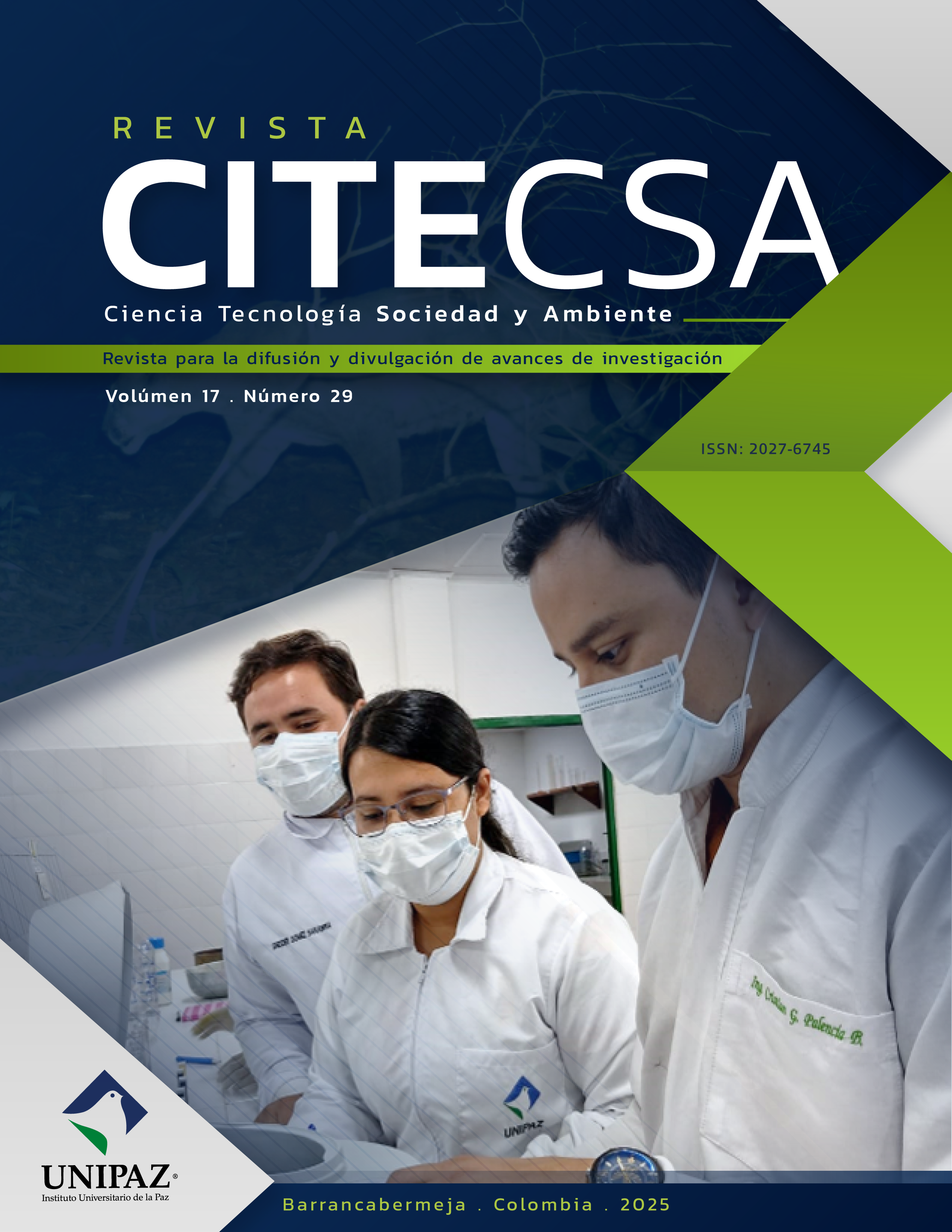Evaluation of essential oils from orange peel (Citrus sinensis) using different extraction methods for possible industrial use in the city of Barrancabermeja
Keywords:
naranja, extracción, aceite esencial, propiedades fisicoquímicas, investigación en ciencias.Abstract
Orange essential oil has multiple applications in various industries, such as pharmaceutical, food, and cosmetics, and stands out for its biodegradability. In this study, carried out by the SITEC seedbed of the University Institute of Peace (UNIPAZ), the extraction of essential oil from orange waste generated in a fried food and juice stall in Barrancabermeja, Colombia, was evaluated. Steam entrainment and microwave-assisted hydrodistillation methods were used, in which the orange peel was subjected to the passage of water vapor. The condensate obtained was decanted to separate the essential oil. Yields ranged from 0.133% to 0.378% for steam entrainment, and from 0.116% to 0.299% for microwave-assisted hydrodistillation. The final product is a translucent, highly volatile liquid with a density of 0.83 g/cm³ and a characteristic orange aroma.
References
orange, extraction, essential oil, physicochemical properties, research in science.
Downloads
Published
How to Cite
Issue
Section
License
Copyright (c) 2025 CITECSA

This work is licensed under a Creative Commons Attribution-NonCommercial-ShareAlike 3.0 Unported License.

Este obra está bajo una licencia de Creative Commons Reconocimiento-NoComercial-CompartirIgual 3.0 Unported.

